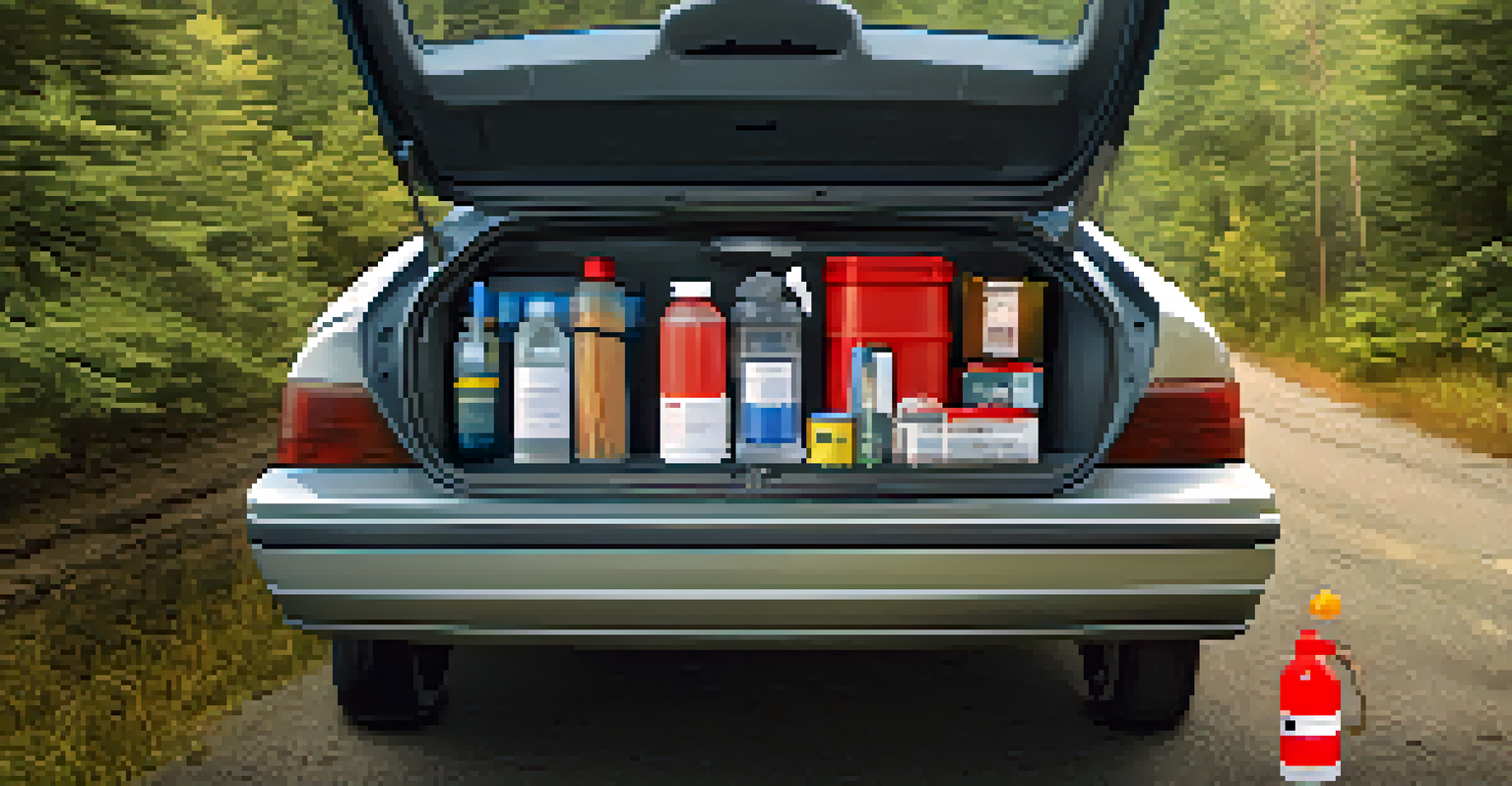Safety Tips for a Successful and Enjoyable Road Trip

Plan Your Route and Share It with Someone
Before hitting the road, take some time to plan your route. Knowing the roads you'll travel can help you avoid unexpected detours and ensure you reach your destination efficiently. Use a reliable navigation app to keep you updated on traffic and road conditions.
A journey of a thousand miles begins with a single step.
It's also a good idea to share your travel plans with a friend or family member. This way, someone is aware of your intended route and can check in on you if necessary. It adds an extra layer of safety, knowing someone is keeping tabs on your journey.
Lastly, consider checking the weather forecast for your travel dates. Bad weather can significantly impact travel conditions, so being prepared can help you choose the best times to drive or find alternate routes.
Perform a Vehicle Check-Up Before Departure
Your vehicle is your lifeline on a road trip, so giving it a thorough check-up is essential. Start by checking the oil level, tire pressure, and coolant levels. These simple steps can prevent breakdowns and keep your journey smooth.

Don't forget to inspect your brakes and lights too. If you notice any issues, it's best to address them before you set off. A well-maintained vehicle reduces the risk of accidents and ensures a more enjoyable ride.
Plan Your Route for Efficiency
Mapping your route and sharing it with someone ensures you stay on track and adds a layer of safety.
Additionally, consider having a professional mechanic perform a pre-trip inspection, especially if you're planning a long road trip. They can identify potential problems that you might overlook, giving you peace of mind on the road.
Pack an Emergency Kit for Unexpected Situations
An emergency kit is a must-have for any road trip. Think of it as your safety net for unforeseen circumstances. Your kit should include items like a first-aid kit, flashlight, batteries, basic tools, and jumper cables.
It’s not about the destination, it’s about the journey.
Additionally, consider packing non-perishable snacks and water. If you find yourself stranded, having some supplies on hand can make a challenging situation more manageable. It’s always better to be over-prepared than underprepared.
Lastly, don’t forget about your mobile phone charger and a portable power bank. Staying connected is crucial, especially in emergencies, so ensure you have a way to charge your devices on the go.
Take Regular Breaks to Stay Alert
Driving for long stretches without a break can lead to fatigue, which is a significant safety risk. To stay alert, make it a habit to pull over and take regular breaks every couple of hours. Stretching your legs and taking a few deep breaths can rejuvenate both your mind and body.
Use these breaks to hydrate and grab a quick snack. Staying nourished and hydrated boosts your energy levels and keeps your focus sharp. If you're traveling with others, consider rotating drivers to share the workload.
Perform Vehicle Check-Ups
A thorough vehicle inspection can prevent breakdowns and enhance your travel experience.
Remember, it's better to arrive late than to risk an accident due to drowsy driving. Prioritizing your well-being will ultimately lead to a more enjoyable road trip experience.
Stay Focused and Avoid Distractions While Driving
Distractions are one of the leading causes of road accidents, so it's crucial to stay focused while driving. Put your phone away and avoid fiddling with the radio or GPS while on the road. If you need to make a call or change directions, pull over safely first.
Engaging your passengers in conversation can help keep you alert, but be mindful not to let the chatter distract you from your driving. Set ground rules for your discussions, ensuring that everyone understands the importance of safety.
Lastly, remember to keep your emotions in check. If you're feeling stressed or upset, take a moment to breathe and calm down before getting back on the road. A clear mind will help you make better driving decisions.
Be Aware of Road Conditions and Local Laws
Different states have varying road conditions and traffic laws, so it's essential to familiarize yourself with the regulations of the areas you'll be traveling through. Speed limits, seatbelt laws, and cell phone usage rules may differ, and you wouldn't want to inadvertently break the law.
Additionally, keep an eye on the road conditions as you drive. If you encounter construction zones or adverse weather, adjust your speed and driving behavior accordingly. Staying alert to these changes can help you navigate safely.
Prepare for Unexpected Delays
Having a backup plan for delays helps you adapt and enjoy the journey, even when things go off course.
Lastly, consider downloading local traffic apps for real-time updates on road conditions. Being informed can save you time and help avoid potential hazards.
Have a Backup Plan for Unexpected Delays
Even the best-laid plans can go awry, so it's wise to have a backup plan in case of unexpected delays. Whether it’s a flat tire, a traffic jam, or adverse weather, knowing how to handle these situations can alleviate stress.
Consider having a list of roadside assistance services handy, as well as alternate routes to your destination. This way, if you encounter a significant delay, you can quickly adapt and find a solution.

Remember to stay patient and flexible. Sometimes, the unexpected can lead to unforgettable adventures, so embrace the journey, even when it doesn’t go as planned.